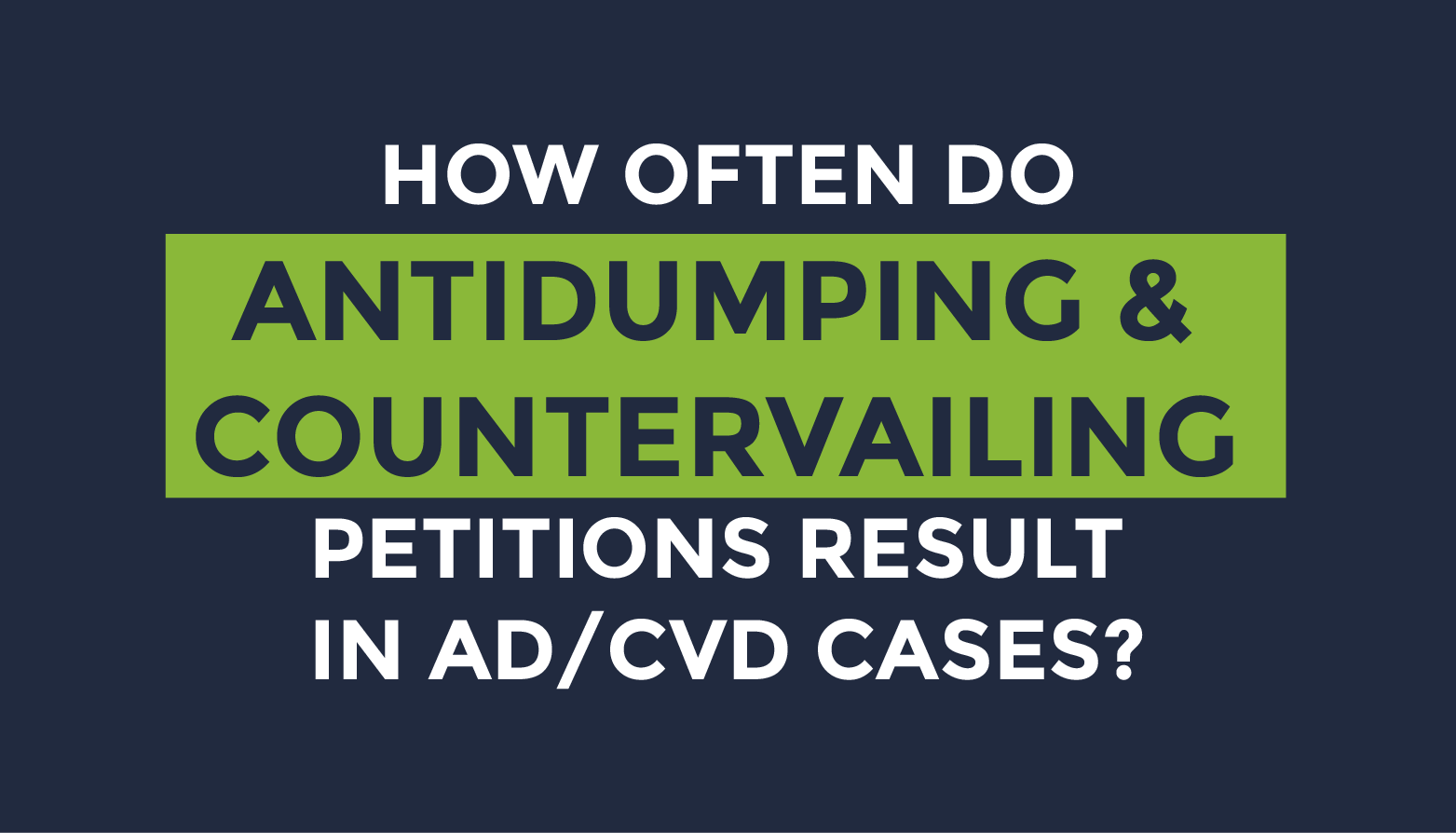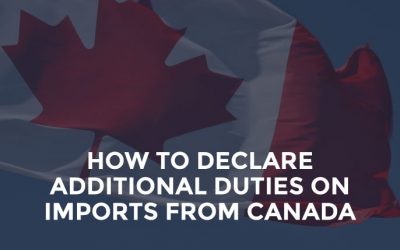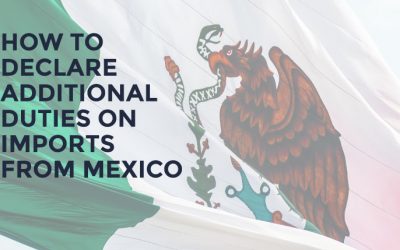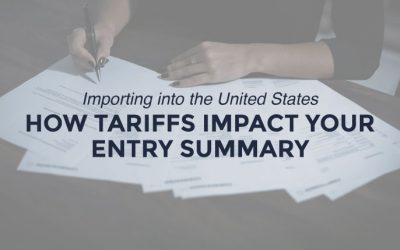Antidumping and Countervailing can be a scary topic for U.S. Importers when a petition is filed, but how often does that petition become an enforced case?
Antidumping and Countervailing (AD/CVD) can be a scary topic for U.S. Importers whether they have been importing for many years or are new to the international trade industry. This fear stems from the higher duty rates imposed on goods subject to antidumping and/or countervailing, the length of time these cases remain enforced, and the extended period of time antidumping/countervailing entries remain unliquidated.
A frequent question U.S. importers have is “When should they become concerned about a potential AD/CVD case?” and the answer we give is always “As soon as an AD/CVD petition is filed against a commodity you are importing”. The reason to be concerned so early in the process is to encourage importers to keep a close eye on this petition and track its status through the AD/CVD investigation process.
This is also due to the fact that a large percentage of antidumping and countervailing petitions result in the enforcement of AD/CV duties on the imported commodity in question.
The Data Behind Antidumping and Countervailing Petitions Resulting in Imposed AD/CV Duties
In a December 2022 report, the United States Government Accountability Office (GAO) released their findings from an in-depth look into the antidumping/countervailing investigation process conducted by the U.S. Department of Commerce (DOC) and the International Trade Commission (ITC). If you would like to learn more specifics about how that process works, read the full report here.
Within that report the GAO included some very interesting data on the number of antidumping and countervailing petitions that resulted in confirmed ADCVD cases.
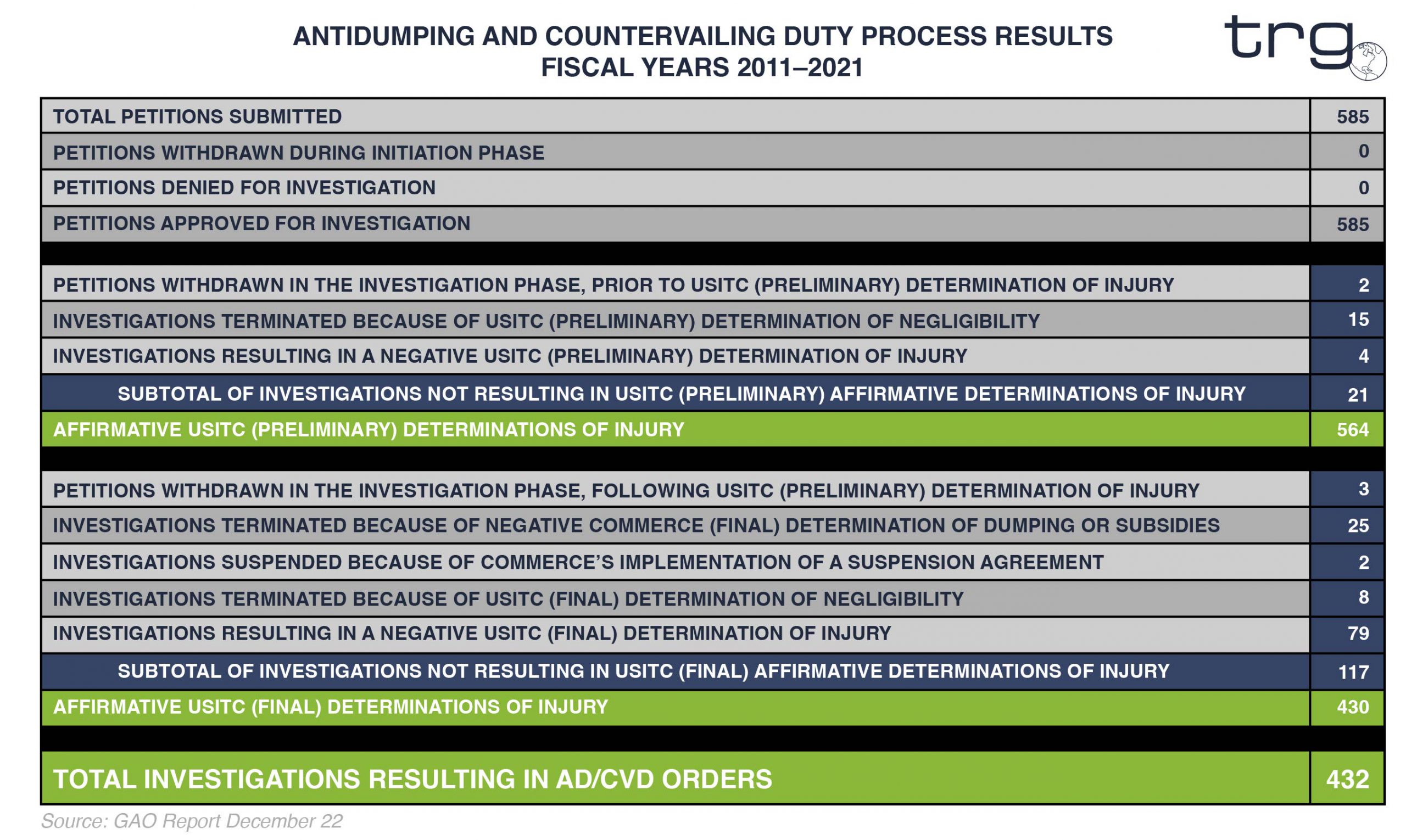
The table above depicts the raw data directly from the GAO report. In this data, we can see that out of the 585 antidumping/countervailing petitions filed between the years of 2011 through 2021, 432 became confirmed antidumping/countervailing cases. The pie chart below summarizes this raw data.
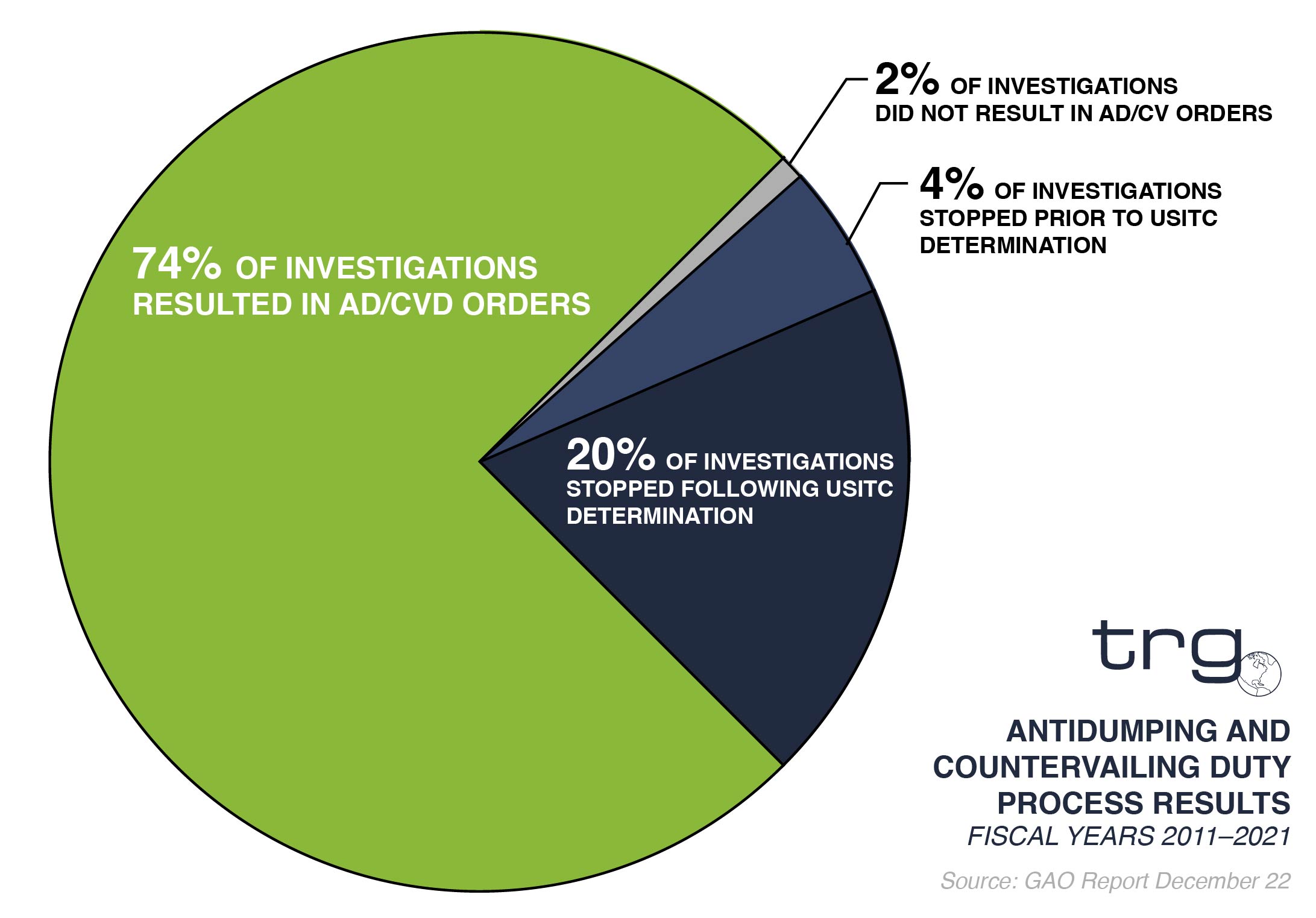
As we can gather from this data, when an antidumping/countervailing petition is filed, there is a 74% chance that it will become an antidumping/countervailing case that imposes AD/CV duties on the commodities in questions. This is stresses the importance of keeping an eye on any AD/CVD case that may arise on goods you import into the United States as early as possible.
How Can You Track Your AD/CVD Cases?
If you are not sure what your antidumping and countervailing case number is, you can use the AD/CV Search Tool to look it up. This search allows you to search using a keyword or case number. Once you locate the correct case number, you can also use this tool to find out updates of where this investigation is in the process.

